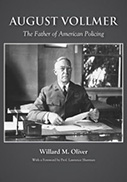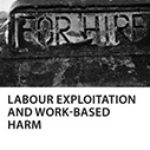August Vollmer: The Father Of American Policing

Author: Willard M. Oliver
Publisher: Durham, NC: Carolina Academic Press, 2017. 804p.
Reviewer: Larry K. Gaines | March 2019
Willard Oliver’s biography provides a detailed examination of the life and times of the American police reform advocate August Vollmer. It is an important study because Vollmer unquestionably can be considered the “father of American policing”: he modernized this sector significantly. Many policing textbooks identify Sir Robert Peel as the father of modern policing based on his work with the London Metropolitan Police Department in the mid-nineteenth century, but Peel largely followed in his predecessors’ footsteps. Vollmer, on the other hand, implemented numerous innovations that have affected policing then and today.
Vollmer’s legacy is not limited to his work with the Berkeley and Los Angeles police departments in California. Police departments across the United States adopted many of his innovations. And as an educator, Vollmer started collegiate police education programs at the University of Chicago, the University of California and San Jose State University. As the author points out, Vollmer has been referred to as “America’s first professor of police science and America’s greatest cop.”
Oliver describes Vollmer’s contributions within the context of early twentieth century culture and law enforcement, an era when policing and other American institutions were rife with politics and corruption. Vollmer’s work helped policing move toward a more professional model.
The four sections of the biography examine: Vollmer’s youth and early formative years; his tenures as police chief in Berkeley and Los Angeles; his contributions as an academic; and his retirement. Vollmer’s parents immigrated to the United States from Germany to New Orleans, where he spent his childhood. Oliver provides a detailed description of the corruption and political intrigue in the city at the time. After leaving New Orleans, Vollmer lived in Germany for a short time and later moved to San Francisco and finally Berkeley. The author describes in detail how his subject’s life experiences shaped his dedication to doing the “right things” in life. Vollmer is portrayed as a dedicated, hardworking and analytic personality.
Part 2 details Vollmer’s career as a police chief, first in Berkeley and then in Los Angeles. Among his many innovations in Berkeley were establishing a departmental crime lab, hiring college-educated officers and the use of polygraphs. Without question, Vollmer was a successful police chief in Berkeley. However, it was a different story in Los Angeles, which was a corrupt city with a high crime rate. The city administrators believed that they were hiring a small-town police chief who would be out of his depth and could be easily controlled: hence, vice and corruption could continue unabated. However, Vollmer immediately moved to clean up criminality in Los Angeles despite continuous attempts by the politicians to undermine him. Oliver details the constant sparring between Vollmer and the city’s politicians. Vollmer’s tenure in Los Angeles lasted less than one year. Although he did not make all the changes he envisioned, he was able to implement a number of reforms, many of which remain in place today. Moreover, before leaving Los Angeles Vollmer completed a study that included recommendations to improve the department. Although the study languished on a shelf for 25 years, when William Parker became chief in 1950 he found and implemented Vollmer’s blueprint. Subsequently, the LAPD became one of the most respected departments in the country, according to the author.
Part 3 examines Vollmer’s years in academia. Today’s sprawling criminal justice higher education enterprise includes hundreds of programs across the country, which developed as a result of financial support from the federal Law Enforcement Assistance Administration (LEAA). There were a few criminal justice academic programs prior to LEAA, but it was August Vollmer who first initiated criminal justice education programs during his tenures at the University of Chicago and the University of California, Berkeley. Vollmer became the first police professor in the United States when he was appointed to the faculty of the University of Chicago in 1929. This appointment was rooted in the university’s desire to develop a research center on policing. Vollmer was hired because of his national police reform reputation. During his tenure, he worked with a number of police professional groups, including the International Association of Chiefs of Police. One important focus of his work was the establishment of the federal Uniform Crime Reports. He also worked with the Wickersham Commission in the U.K., which at the time was the first national commission examining policing.
After leaving the University of Chicago, Vollmer soon was recruited to teach at the University of California, Berkeley. While there, he worked with San Jose State University administrators to establish a police education program at that school. Vollmer was a consultant as well as a teacher during his tenure at the University of California. He advised police departments across the country as well as internationally. Thus, Vollmer essentially laid the foundation for criminal justice education in America.
Part 4 examines Vollmer’s retirement and death. Oliver notes that after his retirement Vollmer did not slow down. He continued to consult on police management studies and worked with various professional groups in law enforcement. However, Vollmer became ill and in 1955 he committed suicide. Vollmer remained active and served as a national voice in policing until his death.
Although Vollmer was an internationally recognized leader in policing, to some extent he has been forgotten today. Oliver’s book corrects this oversight: in addition to telling the story of the man, Oliver does an excellent job of providing the reader with an understanding of early 20th century policing within the context of that era’s big city governments and societies. Accordingly, this is a must read for anyone interested in policing and criminal justice.
Larry K. Gaines, Chair, Department of Criminal Justice, California State University San Bernardino


